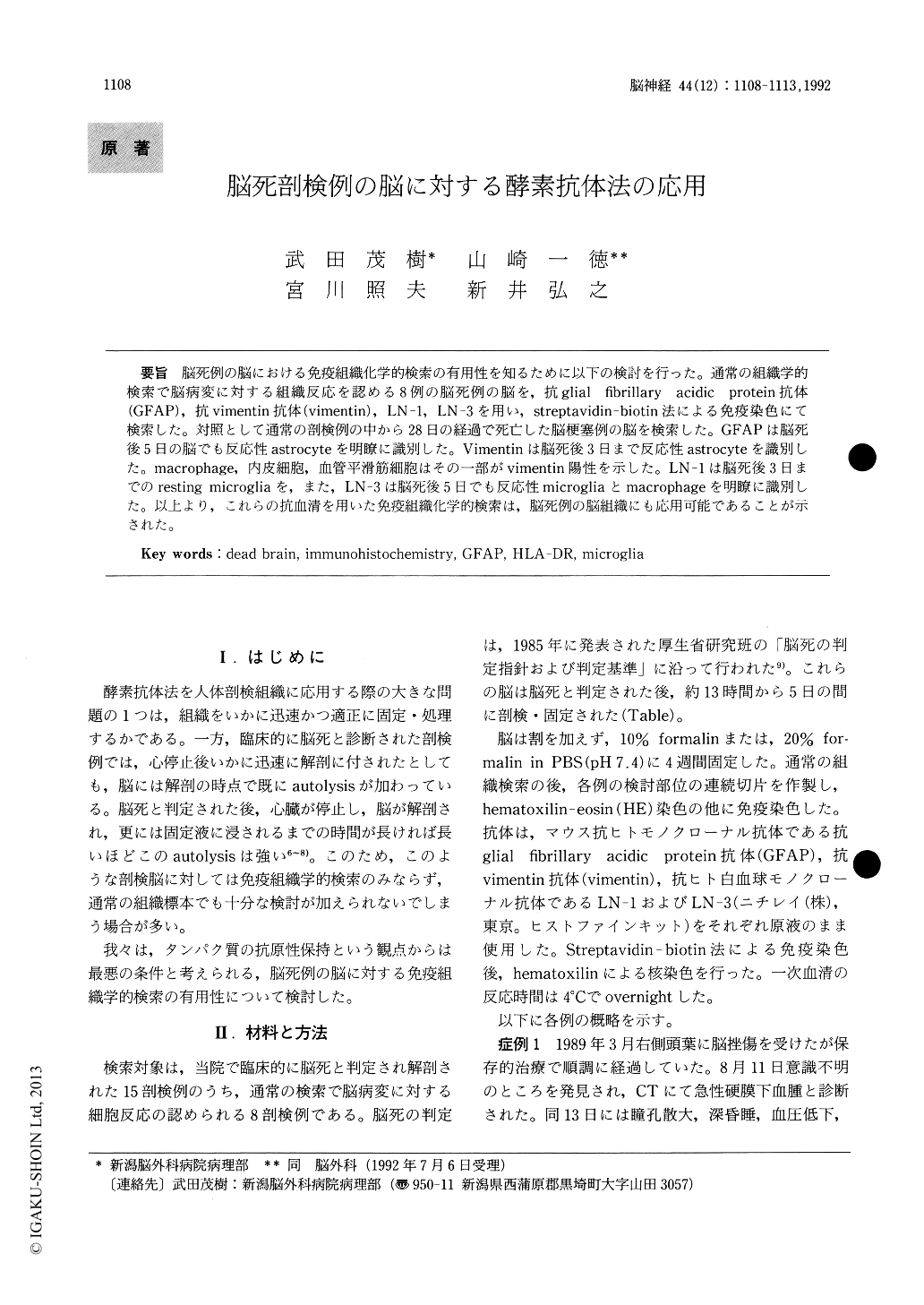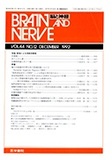Japanese
English
- 有料閲覧
- Abstract 文献概要
- 1ページ目 Look Inside
脳死例の脳における免疫組織化学的検索の有用性を知るために以下の検討を行った。通常の組織学的検索で脳病変に対する組織反応を認める8例の脳死例の脳を,抗glial fibrillary acidic protein抗体(GFAP),抗vimentin抗体(vimentin),LN−1,LN−3を用い,streptavidin-biotin法による免疫染色にて検索した。対照として通常の剖検例の中から28日の経過で死亡した脳梗塞例の脳を検索した。GFAPは脳死後5日の脳でも反応性astrocyteを明瞭に識別した。Vimentinは脳死後3日まで反応性astrocyteを識別した。macrophage,内皮細胞,血管平滑筋細胞はその一部がvimentin陽性を示した。LN−1は脳死後3日までのresting microgliaを,また,LN−3は脳死後5日でも反応性microgliaとmacrophageを明瞭に識別した。以上より,これらの抗血清を用いた免疫組織化学的検索は,脳死例の脳組織にも応用可能であることが示された。
To evaluate the usefulness of immunohisto-chemistry for studies of brain tissues taken from patients with a clinically established diagnosis of brain death, we examined 8 brains that had been removed and fixed in formalin between 13 h and 5 days after diagnosis of brain death (Table) . As a control we also examined the brain of a patient who had suffered extensive infarction with a 28-day clinical course and died of pneumonia. Routine examination of each of the brains revealed old to recent tissue necrosis associated with macrophages, capillary proliferation and/or astrocytic gliosis. The streptavidin-biotin immunoperoxidase methodwas applied to the materials using four monoclonal antibodies : antiglial fibrillary acidic protein (GFAP), anti-vimentin (vimentin), LN-1 and LN-3.
GFAP was stained in reactive astrocytes even 5 days after diagnosis of brain death (Fig. 3, 7) . Vimentin (Fig. 2, 4) was stained in reactive astrocytes until 3 days after diagnosis of brain death. LN-1 (Fig. 5) produced positive staining in resting microglias until 3 days after diagnosis of brain death. LN-3 (Fig. 1, 6, 8), which detects human leukocyte antigen-DR, stained reactive mi-croglias and macrophages even 5 days after diagno-sis of brain death.
From our findings, it is considered that immuno-histochemical examination is useful even in brains from patients diagnosed as brain-dead.

Copyright © 1992, Igaku-Shoin Ltd. All rights reserved.


